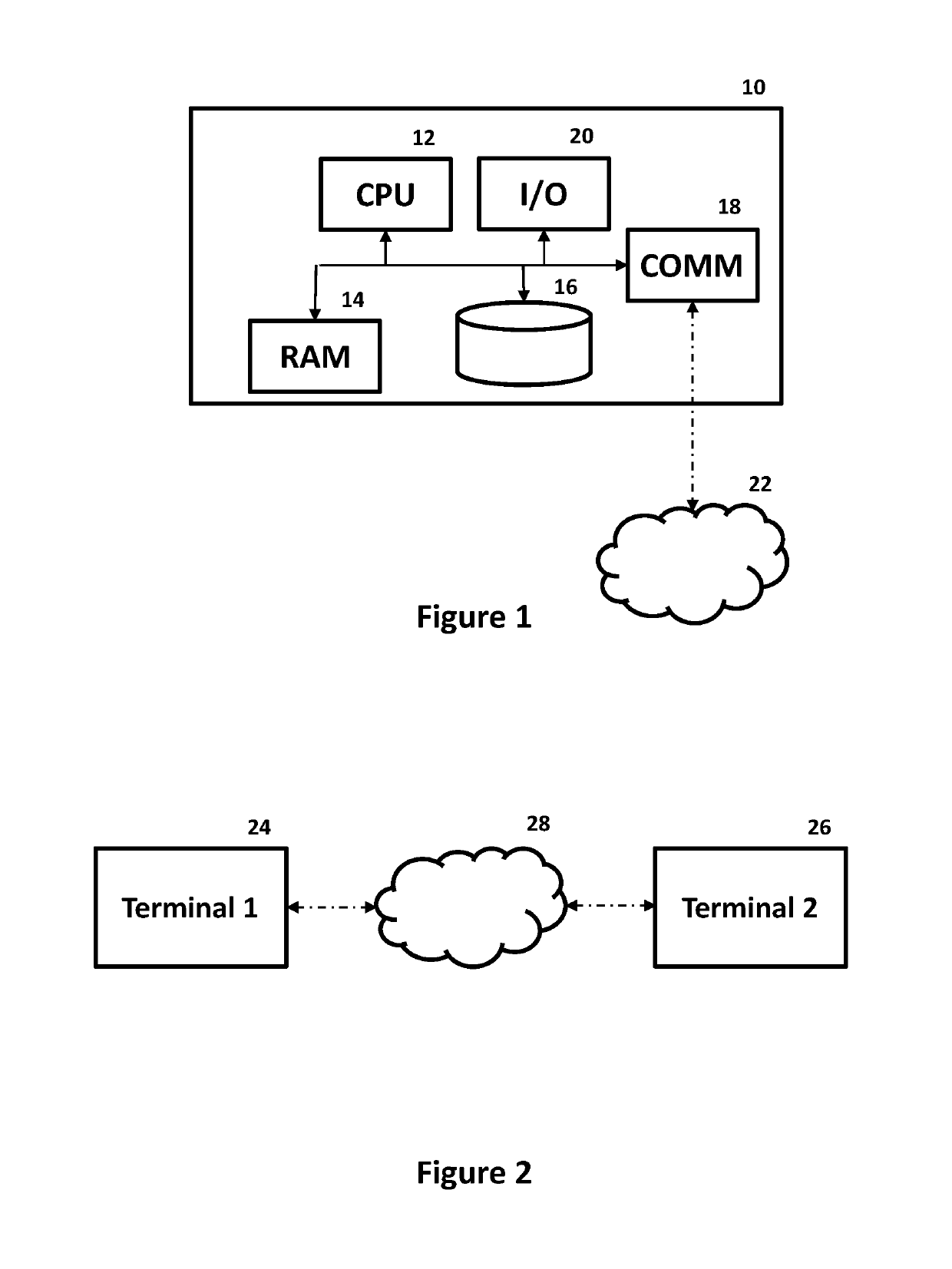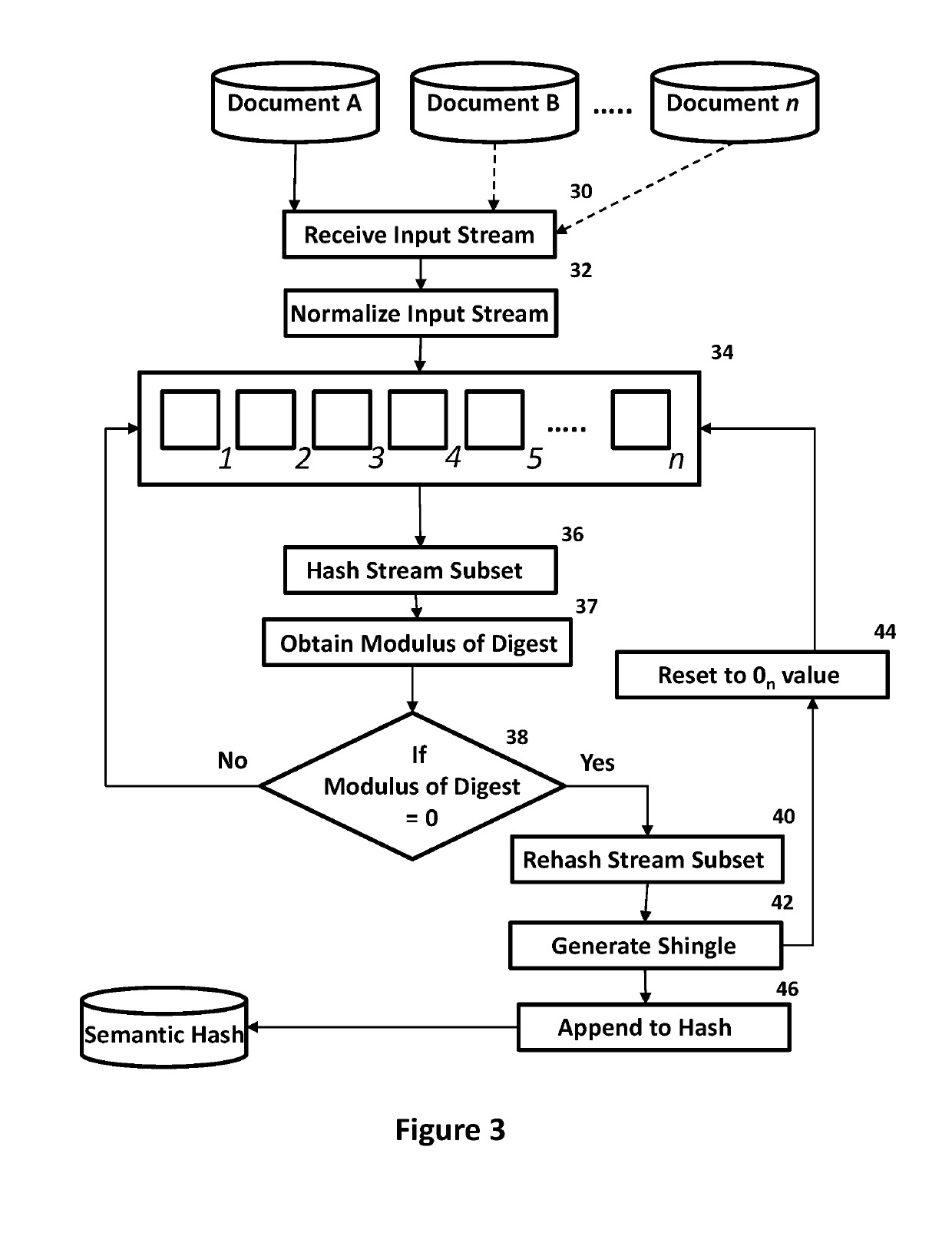Methods and systems for improved semantic meshing
a semantic meshing and semantic technology, applied in the field of information management and governance, can solve the problems of complex task of detecting the similarity of two (or more) digital data files, the inherent problem of known methods of block-based sampling, and the performance limitations of simple implementations of similarity detection. achieve the effect of improving semantic meshing
- Summary
- Abstract
- Description
- Claims
- Application Information
AI Technical Summary
Benefits of technology
Problems solved by technology
Method used
Image
Examples
example
[0050]By way of example and as will be readily understood by the skilled person, given some set of n semantic hashes:[0051]Set(n)=[1, 2, 3 . . . n]
[0052]Each hash has a sequence of shingle values, represented here as decimal digits for clarity:[0053]Hash 1=973457782304388026088303[0054]Hash 2=368837506504581644110948[0055]Hash 3=9734576823043880268303
[0056]For each sequence, two derived values can be inexpensively (with respect to processing power) calculated (with respect to processing power): a length, and an occurrence histogram of each shingle:
[0057]
HashLengthHistogram124[4, 0, 2, 5, 2, 1, 1, 3, 5, 1]224[3, 3, 0, 2, 4, 3, 3, 1, 4, 1]322[3, 0, 2, 5, 2, 1, 2, 2, 4, 1]
[0058]As will be understood by the skilled person, comparing a pair of hashes (1 and 2 in the example provided herein) follows a sequence of gateway conditions, in increasing order of computational cost.
[0059]Given a minimum similarity of 50%:[0060]Length of 1÷Length of 2=24 / 24=1
[0061]As the lengths differ by less tha...
PUM
 Login to View More
Login to View More Abstract
Description
Claims
Application Information
 Login to View More
Login to View More - R&D
- Intellectual Property
- Life Sciences
- Materials
- Tech Scout
- Unparalleled Data Quality
- Higher Quality Content
- 60% Fewer Hallucinations
Browse by: Latest US Patents, China's latest patents, Technical Efficacy Thesaurus, Application Domain, Technology Topic, Popular Technical Reports.
© 2025 PatSnap. All rights reserved.Legal|Privacy policy|Modern Slavery Act Transparency Statement|Sitemap|About US| Contact US: help@patsnap.com


